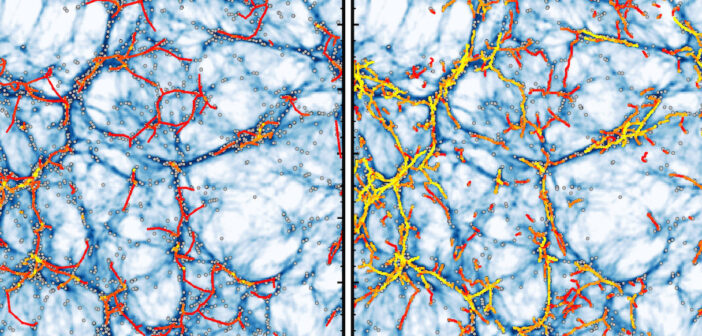Astronomers have found a slimy solution to a tricky problem. Simulations show that matter in our universe is arranged along strands of what’s called the cosmic web — an interconnected series of filaments surrounding bubble-like voids — but discerning the structure of this web is challenging; the filaments that connect luminous galaxies are constructed from dark matter and dim, diffuse gas. In a recent research article, Farhanul Hasan (New Mexico State University) and collaborators demonstrated a new way to reconstruct the cosmic web from the positions of galaxies. The team’s algorithm takes cues from Physarum polycephalum, a type of slime mold that forms intricate filamentary structures as it searches for food. Applying this method to galaxies from the IllustrisTNG cosmological simulation, Hasan’s team showed that the slime-mold-inspired method (right-hand panel above) outperforms the method previously used by the authors (left-hand panel). The blue pattern in the background of the images above shows the dark matter density, gray circles represent galaxies, and the red and yellow lines show cosmic web filaments traced by the algorithm. To learn more about how slime mold informs studies of the cosmic web, be sure to check out the full article linked below.
Citation
“Filaments of the Slime Mold Cosmic Web and How They Affect Galaxy Evolution,” Farhanul Hasan et al 2024 ApJ 970 177. doi:10.3847/1538-4357/ad4ee2
